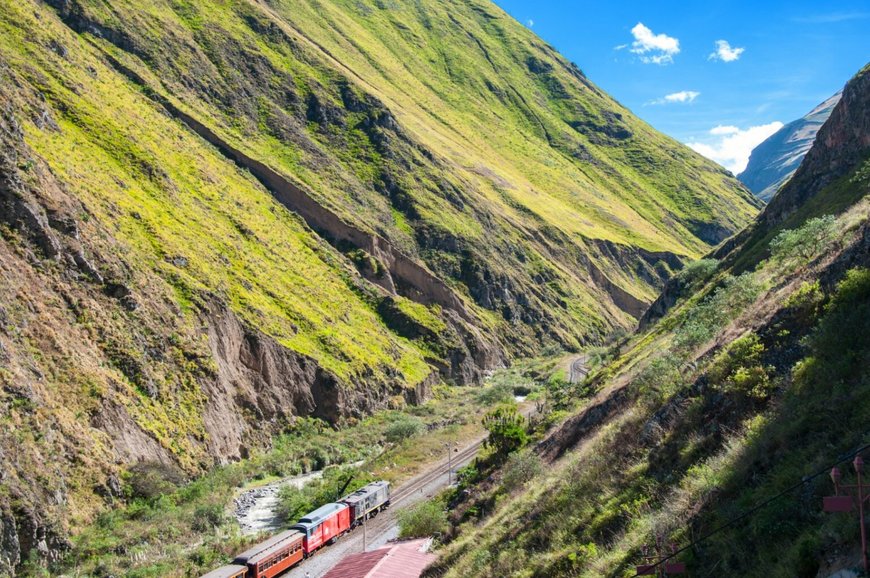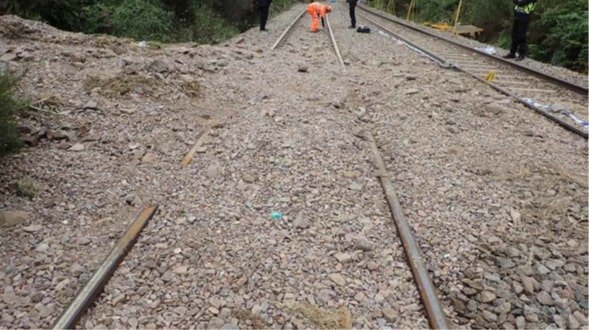railway-international.com
05
'23
Written on Modified on
SENSONIC News
Sensonic: Railway rockfalls – Big and small
How big does a rock need to be to derail a train?.

Some rocks, such as railway ballast, are often an integral part of the railway track system. However stray rocks coming from the surrounding environment can pose a real risk to railway operations and staff safety if they end up on or near the track. The size of rock needed to cause damage varies significantly with both traffic type and speed, and surprisingly small rocks can deliver sometimes catastrophic results if they end up in the wrong location. It isn’t always the size of rocks that matters, a volume of smaller rocks or earth on track can pose as big a risk as larger single rogue rock.
How do rocks get onto railway track?
Newtons first law can be simplified and paraphrased as “A rock remains at rest, unless acted upon by a force.”. The force of gravity is constant, so the force needed to set a rock in motion must come from elsewhere and is usually the result of the environment acting on it. These environmental factors include wind, rain, freezing and thermal expansion as well as ground movements from geological activity (earthquakes/tremors).
A symptom of climate change is more extreme weather events which can accelerate weathering of rock via flood, frost, fire and wind, potentially turning a once solid rock, into a mobile one!
Rocks find their way onto the track via several mechanisms, which we’ll explore below, along with showing some of our clever AI-enabled technology which is able to detect them in real-time.

Rockfall
Where railways run through steep sided valleys, under cliffs or outcrops or even through some unlined rock tunnels, a displaced rock can fall vertically downward landing on, or near, the track bed. This vertical dropping of a rock onto the track bed poses challenges for detection techniques that rely on visually detecting an obstruction. A 1m/3ft diameter snowball poses a very different risk to a train than a 1m/3ft diameter rock! Because Sensonic is listening for ground vibrations caused by the impact of a falling rock it’s mass greatly affects the ground vibration energy. Below you can see a “small” rock being dropped from a height of 6 metres onto a railway track below as part of demonstrating our detection capabiltiy. As the rock hits the track bed you can observe vibration energy of the event measured in real-time together with the automatically generated alarm to alert rail operations teams of a potential hazard.
Rockroll
Perhaps more typically railways run through valleys with slopes rather than vertical sides. This means that any rocks that are loosened on the valley side, typically tumble, and roll down the valley toward the railway trackbed. This generates a pattern of vibration energy as the rock bounces and rolls down the slope towards the railway. Here we see a rock rolling down a slope before landing onto the track. Again, we see the corresponding vibration energy graph together with automated alarm generation as the rockfall event is detected in real-time.
Rockslide / Mudslide / Landslide
Another mechanism for ground movements endangering railway operation is where many smaller rocks are put into movement (known as a debris flow), ending up with them being deposited onto the track bed. A surprisingly small debris flow can cause a train derailment. In a tragic instance at Carmont UK, a ~175mm deep debris flow (caused by a drain washing out during extreme rain) cascaded onto the track resulting in derailment of the train, the deaths of 3 people, a £6.7 million fine, (~$8.3 million USD), for the infrastructure owner and a further near million pounds paid in compensation to those affected.

The simulated rockslide/ landslide below shows how even the much smaller impact of many small rocks/debris can be detected from the ground vibration energy they create during their movement and eventual impact with the track.
f you’d like to protect your rail routes with this clever landslide and rockfall detection technology, that stands ready to guard your rail routes 24/7, visit our landslide applications page here.
www.sensonic.com

